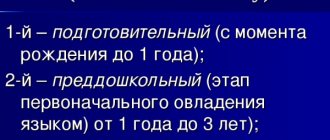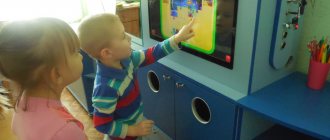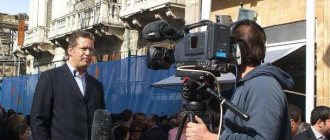The development of speech is a complex process; a child must learn to correctly form and pronounce thoughts, exercise control over the organs of the speech apparatus, understand messages addressed to him and be able to respond to his interlocutor.
Your child may have difficulty with some of these tasks. It is the science of speech therapy that deals with solving problems related to speech, as well as preventing their occurrence.
Basics of speech therapy
Speech therapy is a science that studies defects in speech development and the causes of their occurrence. Engaged in finding ways to eliminate and identify violations in the early and late stages of education through special training and corrective methods.
The goal of
speech therapy is to develop new ways to solve problems associated with incorrect speech production.
The object of
speech therapy is persons with deviations in speech abilities.
Except for those in whom it is associated with physiological deficiencies. The subject of speech therapy
How science are speech impediments. This includes a learning process and developing a remedial program for each individual individually.
What options and techniques does science use?
The methods used by this branch of science make it possible to carry out basic speech therapy practical activities, supported by theoretical knowledge. All methods of speech therapy, as practice has shown, can be divided into groups:
1. Methods for organizing the processes of studying speech mechanisms (comparison, complex study, dynamic research).
2. Empirical (based on acquired experience) methods. In particular, it is observation, experiment and study in psychodynamics. They also include the biographical method, based on the collection, systematization and analysis of data, and praximetric examples of examining speech activity.
3. Methods related to the analysis and computer processing of data obtained through the application of quantitative and qualitative methods.
4. Interpretive methods, which explore how theory can be applied in practice to the phenomena being studied.
History of origin
The first mention of the correction of speech abilities appeared in the 17th century. The deaf pedagogy of that time did not take into account people who were hard of hearing or were completely deaf.
Speech therapy emerged as an independent discipline towards the end of the 19th century. Until the first half of the 20th century, science was in a simplified form. Speech defects were considered as signs of insufficient formation or disorder in the functioning of the articulatory apparatus. Diagnostic measures were carried out from a medical point of view.
After a series of research works, the scientific direction of speech therapy received a broader meaning. They began to connect her directly with pedagogy.
Modern speech therapy has the same general principles as defectology. You can find out more about defectology here. In addition, it is closely related to other sciences (psychology, linguistics, physiology).
The concepts of ZRR and ONR in speech therapy
Delayed speech development
, is typical for children under 4 years of age. The level of development of the speech abilities of a child with this diagnosis is noticeably behind his peers. With timely contact with a speech therapist, the deviation is successfully eliminated.
OSD – general speech underdevelopment.
The concept includes versatile pathologies in the child’s speech development (lexical, grammatical, phonetic and other errors in the pronunciation and formulation of words and sentences).
ONR can be observed with alalia, dysarthyria, etc. In speech therapy, ONR is divided into 4 levels, which are determined by the degree of deviations from the norm. Presented in the table:
| OHP levels | Characteristic |
| Level 1 |
|
| Level 2 |
|
| Level 3 |
|
| Level 4 |
|
Expert opinion
Margarita Sergeevna S.
Speech pathologist and speech pathologist with 15 years of experience working in various speech correction centers with children of different ages.
The presented division is necessary for a speech therapist to make a correct diagnosis and subsequent treatment.
Historically, speech therapy developed based on the knowledge accumulated by pedagogy and medicine. Since the 17th century, they seriously thought about the problem of speech disorders, but they believed that only doctors could correct speech deficiencies. The scientific study of speech pathology and its correction began relatively recently, since the basic anatomical and physiological mechanisms for ensuring speech activity became known, i.e. approximately from the middle of the 19th century. The pioneers of the science of speech disorders are neurologists P. Broca (1861) and K. Wernicke (1873), the first of whom showed that the motor functions of speech are localized in the posterior part of the third frontal gyrus of the left hemisphere (in right-handed people) of the brain, and the second described the center sensory side of speech - in the posterior third of the left temporal gyrus. These discoveries began a debate about which parts of the brain are associated with the speech system. This debate lasted several decades. Some scientists insisted on a strict link between these functions and certain centers, while others argued that the entire brain is responsible for these functions.
Speech therapy flourished at the beginning of the 20th century. Government institutions are opening to provide assistance to abnormal children - only for the deaf (schools, houses of contempt).
Already in 1900, Natalia Aleksandrovna Rau, Fedor Fedorovich Rau, Fedor Andreevich Rau, Elena Yuryevna Rau organized a kindergarten for deaf children of preschool age. And in 1915, Fyodor Andreevich Rau became the director of the Moscow Arnold-Tretyakov School for the Deaf, and he also organized short-term courses for the training of speech therapists.
In 1920, the Institute of Childhood Defects was opened in Petrograd at the Institute of Preschool Education. Its leader is David Vladimirovich Feldberg (on his initiative, classes for incoming deaf children, speech therapy centers at schools for children with mild speech disorders, and at clinics for children with more serious speech disorders were created. Under the leadership of D. V. Feldberg, new means and methods of differentiated education for deaf, late-deafened, hard-of-hearing children, as well as children with various speech impairments).
In 1927, the People's Commissariat of Education of the RSFSR issued an order “On measures to combat speech defects in children of school and preschool age.”
In 1929, at the Kharkov Institute of Otorhinolaryngology L.A. Quint and M.O. Paikin created the first department of speech therapy, in which a lot of research and practical work related to speech pathology was carried out.
In the thirties, a speech therapy sector and a special school for children with speech and hearing impairments were organized. The first head was Rosa Evgenievna Levina. The most ambitious achievement of R.E. Levina is the construction of the concept of general speech underdevelopment. She developed a classification of general speech underdevelopment. Under the leadership of R.E. Levina conducted fundamental research that determined the further development of domestic speech therapy. She has developed methods for timely recognition of possible problems in a child’s readiness to learn and ways to eliminate them. She noted that in order to construct a pedagogical classification of speech disorders, it is necessary to take into account both the state of speech means and the properties of speech behavior. As a result of research by R.E. Levina and her colleagues in speech therapy developed an understanding of speech activity as a complex unity, the component parts of which depend on one another and condition each other. Methods for overcoming speech disorders have been developed, which constitute the main content of speech therapy. In 1951, she published the book “Experience in the study of non-speaking children (alaliks)”, where for the first time in speech therapy the principles of systemic analysis of the speech and mental impairment of alaliks were consistently outlined. In 1968, she published the book “Fundamentals of the Theory and Practice of Speech Therapy,” widely known to speech therapists.
In April 1939, the first All-Union Defectology Conference was convened to resolve a number of urgent issues in defectology. Its main idea is that a speech therapist should deal not so much with the disease itself, but with overcoming its consequences for the harmonious development of the individual. The importance of teamwork for the diagnosis and comprehensive rehabilitation of people with speech disorders is emphasized. As a result of the conference, communication was established between various special institutions.
In 1940, the People's Commissariat of Health introduced speech therapists into the staff of children's clinics.
In 1944, at the All-Union Conference, issues of speech restoration in case of traumatic aphasia and stuttering in disabled people of the Great Patriotic War were discussed. The works of A.R. became widely known. Luria “Traumatic Aphasia” (1947).
In 1956, Natalia Nikolaevna Traugott headed the laboratory of pathology of higher nervous activity at the Institute of Evolutionary Physiology named after. I. M. Sechenov. In 1964, Natalia Nikolaevna defended her dissertation for the degree of Doctor of Medical Sciences on the topic: “On sensory aphasia and alalia.” Her research interests included the study of interhemispheric interaction. For the first time in the history of science, she experimentally studied the work of human analyzers with local brain lesions, and studied the work of the auditory analyzer with childhood hearing loss, alalia and aphasia. She was able to differentiate sensory alalia from hearing loss based on the specific nature of hearing impairment.
In 1958, at a joint conference of the Research Institute of Psychiatry of the Ukrainian Research Psychoneurological Institute, issues of practical assistance to children with speech disorders were resolved. The network of preschool and school institutions has expanded. Gardens are created with a 5-day stay.
In 1963, Tatyana Borisovna Filicheva, under the guidance of Professor R.E. Levina and candidate of pedagogical sciences G.A. Kashe is conducting an experimental study to develop the content of remedial education for preschoolers with phonetic-phonemic underdevelopment. With her participation, the first speech therapy groups were opened in general kindergartens. In 1983 she published the book “Teaching and raising children with general speech underdevelopment in the older groups of a special kindergarten.”
Since 1972, the number of diploma (graduation) works in speech therapy has been steadily growing.
Since 1975, in connection with the Government Decree “On measures to further improve training, employment and services for persons with mental and physical disabilities,” the network of preschool institutions in the education system has been intensively developing - speech therapy kindergartens and groups in mass kindergartens are being organized, to which children with various speech disorders, including those who stutter, are sent through selection medical and pedagogical commissions. This work is also beginning to intensify in the healthcare system, the organization of speech therapy rooms in children's clinics continues, speech therapist positions are being introduced in children's homes, and specialized sanatoriums are being organized.
In the eighties, Mikhail Efimovich Khvattsev was the first to divide all the causes of speech disorders into external and internal. He also identified organic (anatomical-physiological, morphological), functional (psychogenic), socio-psychological and neuropsychiatric causes. Mikhail Efimovich developed a classification of speech disorders. He did a lot to create a system for correcting problems with sound pronunciation.
In 1989, on behalf of the USSR Ministry of Education, Larisa Stepanovna Volkova (developed a new direction in speech therapy: the study and correction of systemic speech disorders in children with visual impairments) became the author and scientific editor of the textbook “Speech Therapy”.
In 1989, Lalaeva Raisa Ivanovna defended her doctoral dissertation “Speech disorders and the system of their correction in the process of speech therapy work in a auxiliary school.” She developed a classification of dyslexia and dysgraphia.
In the history of the formation of the scientific school of speech therapy, three main stages can be traced:
— search and development of the pedagogical foundations of speech therapy;
— justification and development of an integrated medical and pedagogical approach to the study and overcoming of various speech disorders;
— identifying and improving the psychological and pedagogical foundations of speech therapy, searching for ways to optimize psychological and pedagogical study and remedial training and education of children with speech disorders. Just fifty years ago, the profession of speech therapist was considered rare.
(V.N. Seliverstov, Yu.T. Gaubakh. Pedagogical origins of speech therapy. Methodological developments. M., 1984.)
Exercises for correcting defects in speech therapy
Classes with a speech therapist are aimed at developing the child’s articulatory apparatus and respiratory system.
Respiratory exercises teach you to breathe correctly through your nose and mouth, and also train you to hold your breath for a few seconds.
So that the activities do not tire the children, they are performed in a playful way. For example, the game "Ships". Its essence is that the child blows air on the boat, which is in the water, pushing it towards the edge of the container. There are a huge number of such games in speech therapy.
Gymnastics of the articulatory apparatus consists of the following:
- warming up the lower jaw;
- warming up the cheeks;
- warming up the lips;
- tongue exercise
; - charging for the sky.
Exercises are carried out in poetic form using facial expressions. Focusing on which sounds come first and the correct stress in words.



